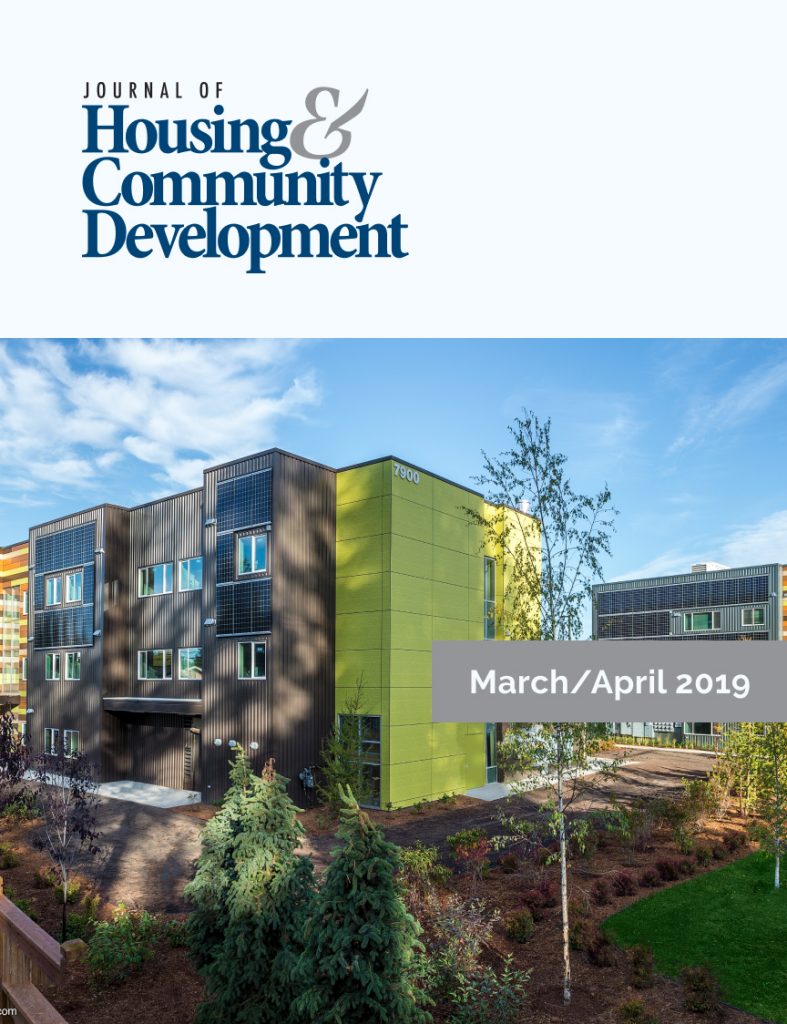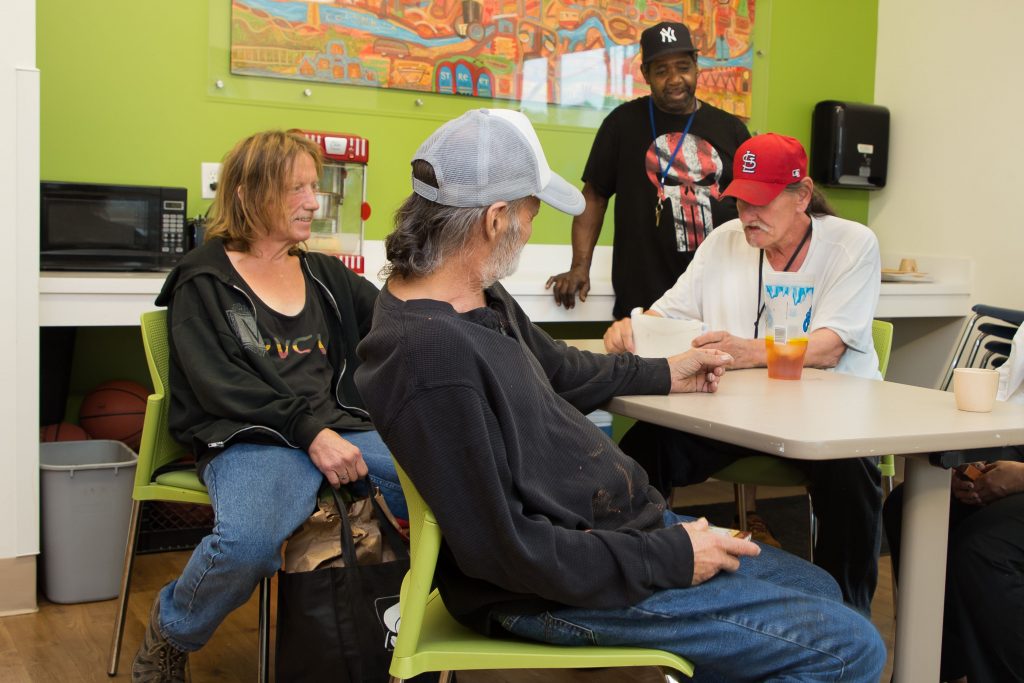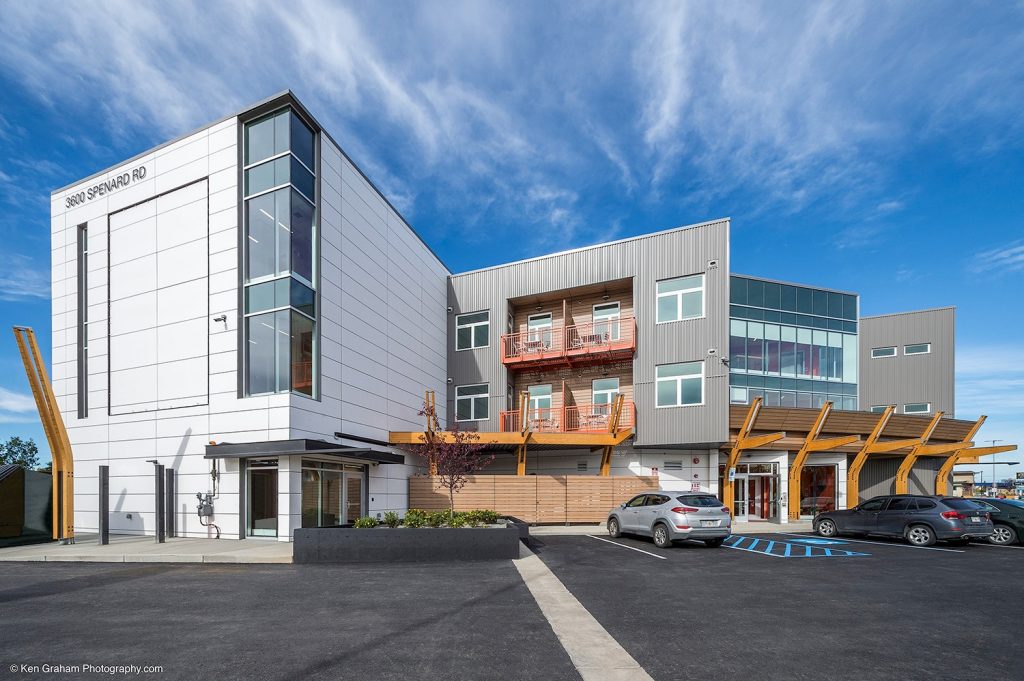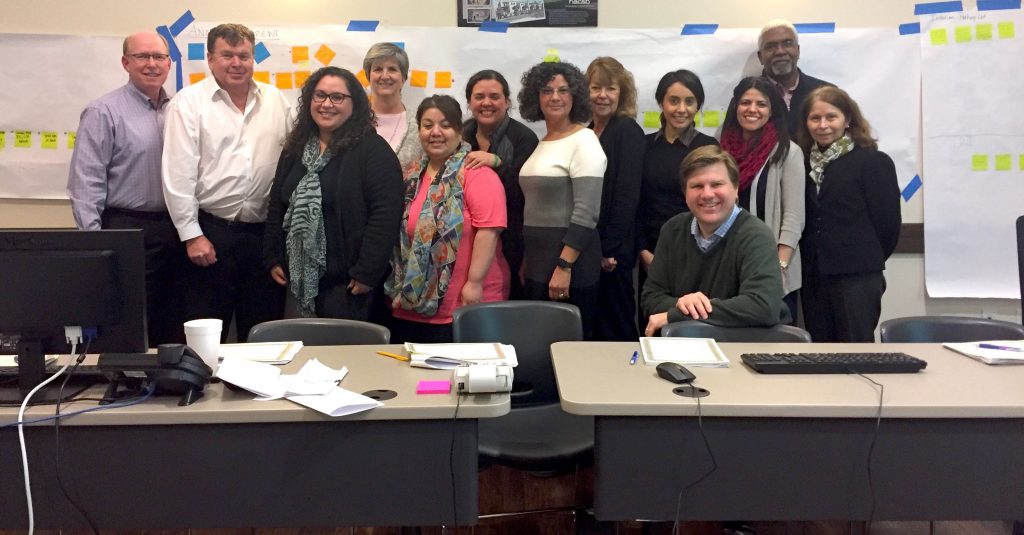Housing as a Platform for Serving Residents

Federal safety net programs are intended to protect the most vulnerable Americans—such as the elderly, people with severe disabilities and young children. Housing assistance plays a critical role in the safety net, providing decent, safe, and affordable housing for millions of extremely low-income and vulnerable families—though, because it is not an entitlement like other federal safety net programs, the assistance available falls far short of the need. Housing subsidies free families to spend on other essentials like healthy food, education, and health care.
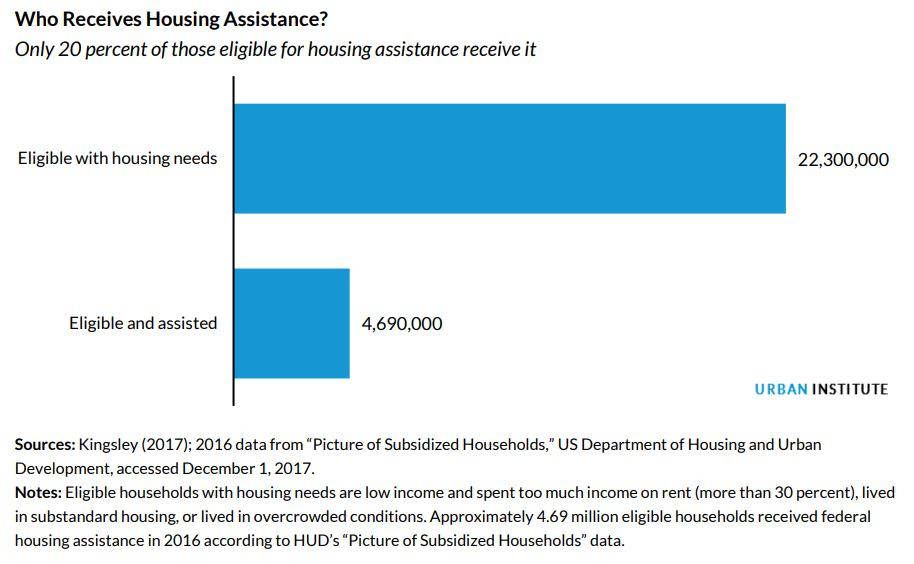
Credit: Urban Institute
Housing authorities’ main function is to administer the subsidies and serve as landlords to the families who depend on them. But many, if not most, housing agencies also provide access to other essential services and supports for their residents. Through our work on the Housing Opportunity and Services Together (HOST) Initiative, we have had the opportunity to learn about the many ways that housing agencies strive to go beyond their basic mission and help promote the health and well-being of their residents. HUD provides some funding for this work and many agencies have used HUD ROSS-SC and FSS funding to offer tenants employment and educational services, provide crisis intervention, and develop partnerships with other organizations that provide supportive services. Housing authorities also provide space for programs like Head Start, tutoring, child care, after-school programming, health care, and food pantries. Especially in small towns and rural areas, housing agencies may become the first line social service provider.
But despite these efforts, the reality is that public housing often serves as the housing of last resort for vulnerable families with complex needs. And the level of funding that most housing authorities get to provide services and supports is modest at best, meaning that staff may end up serving primarily those residents who are willing—and have the wherewithal—to come in the door and may miss or be unable to serve effectively those with deeper needs. Reaching those tenants requires the time and resources to do regular outreach, build trust, and do more than short-term crisis intervention. Not all residents will need that level of support, but the evidence from our years of research in public housing shows that many do—and that the whole family benefits when they receive those kinds of intensive services.
The HOST Demonstration was a unique opportunity to partner with housing authorities and service providers to develop an approach for using their housing as a platform for delivering intensive services to families with children. HOST grew out of two Urban Institute research demonstrations; the full model includes strengths-based coaching and case management, trauma-informed approaches, and using a two-generation lens that serves the needs of both parents and children. And since the original demonstrations, we have created the HOST Network to support housing authorities using the lessons from the research to develop and implement targeted service models.
This article describes the history of the HOST model, how it grew out of the Chicago Housing Authority’s (CHA) efforts to provide services to high-need families who needed intensive assistance as the agency worked to transform its public housing, and then how it evolved into a larger demonstration testing two-generation approaches in public housing. I then describe the ways that HOST has continued to grow and offer lessons these experiences offer for other housing agencies seeking to provide effective services to their residents.
Chicago Family Case Management Demonstration and HOST
Note: This section is adapted from Popkin, S. (2018) “The Limits of Housing Revitalization as a Platform for Improving Residents’ Economic Well-Being: Lessons from the U.S.” International Journal of Urban Sciences: 1-12.
Thirty years ago, Chicago had more distressed public housing than any other city in the nation. The Chicago Housing Authority’s (CHA) dilapidated high-rise developments were notorious; overrun with violent gangs and drug dealers, they had become emblematic of the failures of U.S. social welfare policy. In 1995, the federal government took control of the struggling agency and began the process that resulted in the Plan for Transformation, the nation’s most ambitious effort to revitalize distressed public housing properties and convert them into mixed-income communities that were to benefit both residents and the surrounding communities. (For a complete history of the Plan for Transformation and its impact on the CHA and public housing in Chicago, see Susan J. Popkin, 2016 No Simple Solutions: Transforming Public Housing in Chicago. Washington, DC: Urban Institute Press. ) Our research showed that after 10 years, the Plan had met with some success; most of the worst housing had been demolished and replaced with new housing, and relocated residents reported living in better housing in safer neighborhoods. Yet it was also clear that the outcomes for many families were mixed: while those who had relocated were better off in some ways, it was clear that the highest-need households had substantial unmet service needs and that relocation might put them at further risk of instability.
Because of these concerns, we initiated a partnership with the CHA and social service providers to develop and test a model that would provide intensive services and supports to families facing multiple barriers to a successful relocation. The Chicago Family Case Management Demonstration targeted approximately 400 households in two housing developments with a package of services that included intensive case management (caseload ratios of 30:1); clinical mental health services; a transitional jobs program; substance abuse services; and financial literacy. The findings were very encouraging: participants experienced gains in employment and statistically significant reductions in depression and anxiety, and their physical health stabilized. However, children—and especially older youth—were still struggling and showing signs of distress, including high levels of delinquent and problem behavior.
The Housing Opportunity and Services Together Demonstration (HOST) built on the Chicago experience, testing a whole-family wrap-around model for public housing residents. HOST involved three housing authorities partnering with social service providers-both adult providers to deliver case management and workforce services and youth-oriented providers to provide programming for children and teens. The HOST Demonstration operated in public and mixed-income communities in Chicago, Portland, Oregon, and Washington, DC from 2011 to 2015.
HOST’s intensive services were intended to help parents confront their key barriers to self-sufficiency—poor physical and mental health, substance abuse, low literacy and educational attainment, and historically weak connections to the labor force—while simultaneously integrating services for children and youth. HOST differed from other service models in that it sought to meet participants “where they were at,” that is, to use techniques like strengths-based coaching and motivational interviewing to help participants set their own goals. Finally, HOST also engaged residents in thinking about design and in conducting outreach to encourage families to engage in services (Scott et al. 2016a).
Early results from the HOST Demonstration indicated gains in employment and reductions in lease violations for participants. In addition, HOST offered important lessons about creating partnerships between housing authorities and service providers, the challenges involved in creating true two-generation models, and the critical importance of providing on-site mental health services. Further, the HOST model has shown the benefits of community engagement and trauma-informed approachesas an effective tool for helping residents move toward stability and self-sufficiency.
Learning from HOST
Note: This section is adapted from Popkin, Falkenburger and Haight 2018: “Place Matters: A Two-Generational Approach to Housing.”
During the five years of the Demonstration, other housing authorities and affordable housing providers reached out to us to learn how they could apply promising practices. To meet the demand for a learning community, the Urban Institute created the HOST Network in 2018 as a vehicle for sharing innovative ideas, encouraging partnerships and communication between housing and human service providers, and piloting new evidence-informed resident support models. The Urban team continues to partner with housing agencies in Chicago, Portland, Washington, DC, and now, Bangor, ME to test and pilot new ideas. We also partner with the Aspen Institute’s Ascend Network to lift up lessons about how affordable housing can be an effective platform for services to help families thrive.
Key lessons from HOST for public housing authorities for housing to be an effective platform for supportive services to help improve residents’ well-being and help assisted households to move toward stability and self-sufficiency include:
- Use a two-generation approach that integrates workforce services for adults with strong educational supports for children and youth.
- Provide enhanced case management that uses a strengths-based approach rather than a compliance-oriented approach that involves imposing sanctions.
- Use a trauma-informed approach and address the mental health needs of children and parents together using evidence-based approaches
- Create strong partnerships between housing agencies and service providers that can bring services on-site in assisted housing developments, leverage home visiting programs, and stabilize families during relocation and redevelopment initiatives.
- Engage assisted residents as leaders in designing and implementing new support systems or programs (i.e. parent policy councils) to enhance social capital, ensure services reflect families’ needs and goals, and contribute to the sustainability of the efforts.
- Identify and develop partnerships with early childhood, K-12, and postsecondary systems to increase trust and engagement and address attendance and social-emotional learning.
Two Generation Models in Public Housing
Locating services on-site is critical for building relationships with residents. For example, HomeForward (the Housing Authority of Portland and Multnomah County in Oregon), one of the HOST Demonstration partners, continues to offer coaching services on-site, as well as linkages to workforce services for adults and an alternative high school. The housing authority built a new elementary school and Boys and Girls Club as part of its HOPE VI redevelopment effort and continues to seek out new partners to offer services to its residents. Finally, as an outgrowth of its partnership with HOST, HomeForward helped to create the Portland Teen Food Literacy Program, which includes a curriculum for teens and a monthly youth-led Harvest Share that serves the community.
Putting these models into practice means anticipating the degree of coordination required to share information among partners, avoid duplication, and build trusting relationships. Importantly, programs need to set meaningful performance measures that go beyond tracking attendance. In HOST, the original demonstration case management system tracked engagement (number of contacts with families), and key outcomes like lease violations, employment, and income. As the field has continued to evolve, new HOST partners like Bangor Housing’s Families Forward program track school attendance for children and, for younger children, scores on measures to assess developmental and socio-emotional learning.
A Trauma-Informed Approach. Many low-income housing communities have experienced decades of disinvestment and segregation that have led to high levels of violence, crime, and other forms of trauma. HOST made providing access to mental health services a core principle. Recognizing the critical importance of building trust with residents—many of whom have experienced badly managed public housing and indifferent service providers—HOST demonstration sites brought the providers to the communities. Case managers built relationships with families and when they identified a need, introduced them to the on-site clinicians who provided counseling, support groups for adults and children, and advocacy. The Chicago HOST site developed and piloted an approach to incorporate mental health clinicians into a home visiting model. And the new HOST partners at BangorHousing are now partnering with a provider who is offering on-site clinical services for both adults and children.
Engage residents as leaders in designing and implementing new support systems. In addition to ensuring that mental health supports and other programs and services are implemented with a trauma-informed lens, engaging residents as leaders promote healing from past individual and community-level trauma. Operating with a trauma-informed lens allows stakeholders to better understand and acknowledge community experience and implement strategies that help communities have ownership over initiatives and better incorporate results in a meaningful way.
Financing Services. Financing services is a major concern for housing authorities, especially in this time when many are struggling to find the funding to maintain older properties. Moving to Work (MTW) agencies have the flexibility to dedicate resources to services and to try pilots and innovative partnerships. But other agencies can also find innovative ways to leverage their HUD service dollars or, if they are doing RAD conversions, to work service funding into their financing packages. For example, our partners at Bangor Housing are leveraging their FSS funds to create an innovative two-generation service model. The agency has also funded a Boys and Girls Club on the grounds of its largest development and has worked to form effective partnerships with other local providers, schools, and community colleges to create an enhanced service model. The agency has also been entrepreneurial in obtaining funding from local foundations to support its work. Home Forward in Portland is building service funds into its RAD financing deals as it rehabilitates and develops new properties. And, finally, the CHA has continued to be proactive in building lasting partnerships with Chicago Community Colleges and in contracting with social service agencies to bring services to its residents.
More Articles in this Issue
- SPONSORED CONTENT BY: KEYBANC
Public Housing Authority Update
KeyBanc Capital Markets is a trade name under which corporate and investment banking products and services… Award of Excellence: Lincoln Place
The Vancouver Housing Authority (VHA) wins a 2018 Award of Excellence in Affordable Housing for creating Lincoln…Using Public-Private Partnerships to Fund Affordable Housing
The Housing Opportunities Commission of Montgomery County (HOC) wins a 2019 Award of Excellence in…Award of Excellence: Cosecha Court
The Yakima Housing Authority (YHA) wins a 2018 Award of Excellence in Affordable Housing for using seasonal…Award of Excellence: 3600 Spenard
The Cook Inlet Housing Authority (CIHA) wins a 2018 Award of Excellence in Affordable Housing for the…Lean-ing Into Good Change: An HCV Success Story
The Housing Authority of the County of Santa Barbara (HASBARCO) wanted to improve their Housing Choice Voucher (HCV) program…
